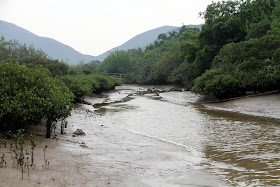This is wrong for three reasons:
1. Plastic balloons are an insidious form of marine pollutant, because once in the oceans they take on the role of “Food Mimic” – to many marine animals such as turtles, they are eaten because they look like their natural food.
2. This is against the law in Hong Kong - releasing balloons like this is an act contrary to the conditions of the Air Navigation (Hong Kong) Order 1995 (Notice of Mass Balloon Release).
3. It is encouraging the children in the protest to break the law and worse still, not consider the consequences of their actions.
See the full report here:
http://www.scmp.com/news/hong-kong/article/1220085/dockers-drive-home-message-li-ka-shing
http://www.scmp.com/news/hong-kong/article/1220085/dockers-drive-home-message-li-ka-shing
COMMENT
What rules govern the mass release of balloons in Hong Kong
According to the Civil Aviation Department “Frequently Asked Questions” page:
FAQ 44. Can I release a large number of balloons?
Balloons not larger than 30 centimeters (12 inches) in diameter may be released individually, but persons intending to release large number of balloons should notify the Civil Aviation Department.
Note: The e-notification and all relevant information should reach the CAD at least 7 working days prior to the date of the proposed balloon release.
FAQ 44a. What are the penalties if the above regulations are breached?
If any person contravenes the above provision, he shall be guilty of an offence and liable to a fine not exceeding $5,000.
http://www.cad.gov.hk/english/faq.html
What procedures govern the mass release of balloons in Hong Kong
Permission needs to be sought using a Notice of Mass Balloon Release (Form DCA 253 (rev Oct 08)). See following link:
http://www.cad.gov.hk/application/DCA%20253.pdf
According to the form, the following conditions are normally required to be observed for the mass release of balloons:
(a) The balloons shall be released individually, i.e. not tied together.
(b) When fully inflated, the maximum linear dimension of each balloon shall not exceed 30 cm (12 inches).
(c) Paper banners or other attachments to the balloons are not permitted.
(d) The balloons should be of rubber material; inflatable balloons of metallic material are not permitted.























